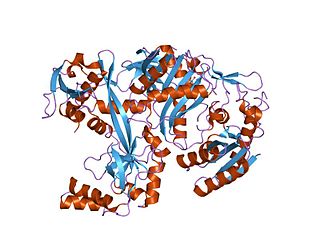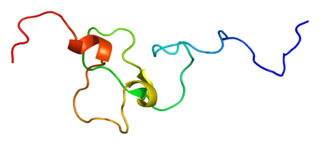Piwi like RNA-mediated gene silencing 4 is a protein that in humans is encoded by the PIWIL4 gene. [5]
Piwi like RNA-mediated gene silencing 4 is a protein that in humans is encoded by the PIWIL4 gene. [5]
PIWIL4 belongs to the Argonaute family of proteins, which function in development and maintenance of germline stem cells (Sasaki et al., 2003 [PubMed 12906857]).

Piwi genes were identified as regulatory proteins responsible for stem cell and germ cell differentiation. Piwi is an abbreviation of P-elementInduced WImpy testis in Drosophila. Piwi proteins are highly conserved RNA-binding proteins and are present in both plants and animals. Piwi proteins belong to the Argonaute/Piwi family and have been classified as nuclear proteins. Studies on Drosophila have also indicated that Piwi proteins have no slicer activity conferred by the presence of the Piwi domain. In addition, Piwi associates with heterochromatin protein 1, an epigenetic modifier, and piRNA-complementary sequences. These are indications of the role Piwi plays in epigenetic regulation. Piwi proteins are also thought to control the biogenesis of piRNA as many Piwi-like proteins contain slicer activity which would allow Piwi proteins to process precursor piRNA into mature piRNA.

Beta-catenin-interacting protein 1 is a protein that is encoded in humans by the CTNNBIP1 gene.

Protein argonaute-2 is a protein that in humans is encoded by the EIF2C2 gene.

Elongation factor 1-alpha 2 is a protein that in humans is encoded by the EEF1A2 gene.

Deleted in azoospermia protein 2 is a protein that in humans is encoded by the DAZ2 gene.

Protein argonaute-1 is a protein that in humans is encoded by the EIF2C1 gene.

Inhibitor of growth protein 4 is a protein that in humans is encoded by the ING4 gene.

Metastasis-associated protein MTA3 is a protein that in humans is encoded by the MTA3 gene. MTA3 protein localizes in the nucleus as well as in other cellular compartments MTA3 is a component of the nucleosome remodeling and deacetylate (NuRD) complex and participates in gene expression. The expression pattern of MTA3 is opposite to that of MTA1 and MTA2 during mammary gland tumorigenesis. However, MTA3 is also overexpressed in a variety of human cancers.

Sperm-associated antigen 8 is a protein that in humans is encoded by the SPAG8 gene.

Piwi-like protein 1 is a protein that in humans is encoded by the PIWIL1 gene.

Outer dense fiber protein 2, also known as cenexin, is a protein that in humans is encoded by the ODF2 gene.

Protein POF1B is a protein that in humans is encoded by the POF1B gene.

Spermatogenic leucine zipper protein 1 is a protein that in humans is encoded by the SPZ1 gene.

NLRP5, short for NOD-like receptor family pyrin domain containing 5, is an intracellular protein that plays a role in early embryogenesis. NLRP5 is also known as NACHT, LRR and PYD domains-containing protein 5 (NALP5), Mater protein homolog (MATER), PYPAF8, PAN11, and CLR19.8, and is one of 14 pyrin domain containing members of the NOD-like receptor family of cytoplasmic receptors known to mammals.

Zinc finger protein 300 is a protein that in humans is encoded by the ZNF300 gene. The protein encoded by this gene is a C2H2-type zinc finger DNA binding protein and a likely transcription factor.

Nanos homolog 1 (Drosophila) is a protein that in humans is encoded by the NANOS1 gene.

Testis expressed 15 is a protein that in humans is encoded by the TEX15 gene.

Dynein axonemal heavy chain 1 is a protein that in humans is encoded by the DNAH1 gene.

YTH N6-methyladenosine RNA binding protein 2 is a protein that in humans is encoded by the YTHDF2 gene.

TATA-box binding protein associated factor 7 like is a protein that in humans is encoded by the TAF7L gene.
This article incorporates text from the United States National Library of Medicine, which is in the public domain.